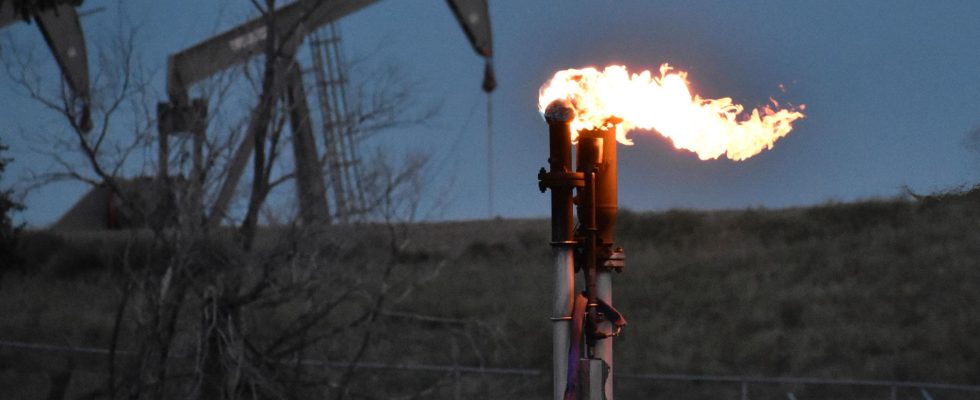unsaveSave
expand-left
fullscreenGas flaring, setting fire to leaking gas, is common in the oil and gas industry. File photo from an oil field in the United States in 2021. Photo: Matthew Brown/AP/TT
As big as a washing machine, it will scout for invisible climate criminals from space. The hope is that the new satellite will contribute to reduced emissions of methane gas.
It has been called the lowest hanging fruit for quickly reducing emissions and slowing climate change. In the shadow of the well-known culprit carbon dioxide hides the greenhouse gas methane – which is estimated to account for 30 percent of today’s warming.
Methane, also called natural gas, has a greater warming effect than carbon dioxide but with a much shorter lifetime in the atmosphere. After twelve years, most of it is gone.
A reduction in methane emissions is seen as a way for the world to buy more time to tackle climate change, and over 150 countries have signed a pledge to cut emissions by 30 percent by 2030. Even some companies have hung on.
Invisible gas
But the gas is invisible to the eye, odorless and mixes quickly into the atmosphere – making it nearly impossible to trace to its source. And it has turned out that the emissions are greater than thought. But a new satellite recently launched into space should help track down emissions culprits – particularly in the fossil oil and gas industry.
There are thousands of oil and gas facilities around the world with equipment that leaks or malfunctions, releasing large amounts of methane. Many in the fossil fuel industry also choose not to share their data publicly.
– This is a tool to hold actors accountable. It can be used to single out companies that perform poorly on emissions, says Mark Brownstein of the US environmental organization EDF, which partially funded the satellite.
– But it is also a tool that can help document the progress that large companies are making to reduce their emissions.
The agricultural sector is also a major source of methane emissions. EDF’s focus on the oil and gas sector is described as a strategic choice, as it involves fewer actors with larger budgets that can be targeted at cleaning up.
Public data
There are other satellites that can already track large sources of methane. But the new one should have better resolution. When fully operational early next year, it will collect data that is free for anyone to use.
Fixing the methane leaks is not that expensive and the oil and gas industry knows how to go about it, according to EDF’s chief scientist Steven Hamburg.
– Some call it low-hanging fruit. But I like to call it a fruit that practically lies on the floor, he says.
FACT Methane emissions
The largest source of global human-caused methane emissions is the agricultural sector, which accounts for about 40 percent of the pie, according to the International Energy Agency (IEA). Next comes energy, which accounts for around 37 percent, and in third place comes the waste sector.
Read more
